Upland bird hunting is enjoyed by millions of hunters every year. Defined as the pursuit of upland birds, including quail, pheasant, grouse, woodcock, prairie chicken, chukar, grey partridge, and other notable landfowls, wingshooting is considered an important recruitment tool for new hunters and the R3 movement.
We looked closely at diverse states across the country to fill out this list of the top 10 states to pursue upland birds. With expert insight from onX Ambassadors and staff, we hope this list puts you on more birds this fall or introduces you to new places to run dogs, bust coveys, or yell “Rooster!”
TL;DR: This guide spotlights the top 10 U.S. states for upland hunting and what each does best.
Highlights: Montana (early-season multi-species across huge public acreage), Kansas (liberal limits; quail + pheasant with big WIHA access), South Dakota (still king for pheasants with massive public/walk-in acres), Maine (best East Coast grouse/woodcock), North Dakota (sleeper: sharpies, huns, pheasants + morning waterfowl), Arizona (winter mearns, Gambel’s, and scaled quail on vast public land), Wyoming (prime sage-grouse window), Nebraska (prairie grouse + strong pheasant/quail; big Open Fields & Waters access), Minnesota (ruffed/spruce/woodcock in the north; quiet pheasant opportunities in the west; four-species days are possible), and Idaho (chukar-and-view country with diverse species and abundant public land).
Use onX Map Layers (Public/Private, Walk-In/Access programs) to e-scout habitat seams, pressure, and legal access before you go.
Without further ado…

Montana: Best State for an Early Season Multi-species Hunt
Starting at the eastern half of the state, sharp-tailed grouse, Hungarian partridge, and pheasants are plentiful. It’s not uncommon to harvest all three species within the same walk, and due to the millions of acres of public land, it’s a great place to get away from other hunters.
As you start heading towards central Montana, you can still expect to get into the same birds as the east, but you’ll also be able to target sage grouse. While the population is in steady decline due to habitat loss, Montana is still home to an estimated population of 75,000 plus birds. Unlike its neighbor to the south, Wyoming, with a two-week or three-day season depending on which area of the state you’re in, Montana has a lengthy 30-day season spanning the month of September. This makes Montana an ideal state to target bombers.
As you continue to travel west into the Rockies, forest grouse become primary targets. Ruffed, spruce, and dusky grouse are plentiful in many of the areas. The abundance of public land, the number of different species to pursue, and the lengthy seasons should put the state on any bird hunter’s bucket list.
Take a closer look at Montana:

Kansas: Best State for Liberal Bag Limits
If you’re in search of bobwhite quail, Kansas is the place to be. With a limit of four roosters and eight quail per day, Kansas can yield heavy vests at the end of the day.
Kansas boasts excellent bird populations and plenty of land to hunt them. The Sunflower State is 97% private land, but the Kansas Department of Wildlife and Parks began the Walk-in Hunting Areas program, better known as WIHA land. This means to successfully hunt birds on over 1 million acres of accessible lands in Kansas, you’ll need to turn the WIHA Layer on in the onX Hunt App.
The Kansas Department of Wildlife and Parks releases an Upland Bird Forecast each year, noting which region is likely to offer the best quail hunting. With over 100,000 acres of public land and another 230,000 acres of WIHA, it’s been a great area to find a covey rise or two.
Kansas also offers one of the best chances for a multi-species quail and pheasant hunt, and the favorable weather in years past has really shown what Kansas can do.
“Recent years have been banner years for both quail and pheasants in Kansas,” says onX Hunt Midwest Manager Ben B. “I had days where we were moving upwards of 20 coveys each day, and that’s almost unheard of in this day and age.”
Both greater and lesser prairie chickens also call Kansas home. The southwest portion of the state is closed to prairie chicken hunting, where the struggling lesser prairie chicken is most often found. There are still excellent opportunities to hunt greater prairie chicken in the northwestern part of the state. The best opportunity to bag one will be the best in the Northern High Plains and Smoky Hills region where populations have been expanding or stable and public land that holds birds is easier to find.
Take a closer look at Kansas:
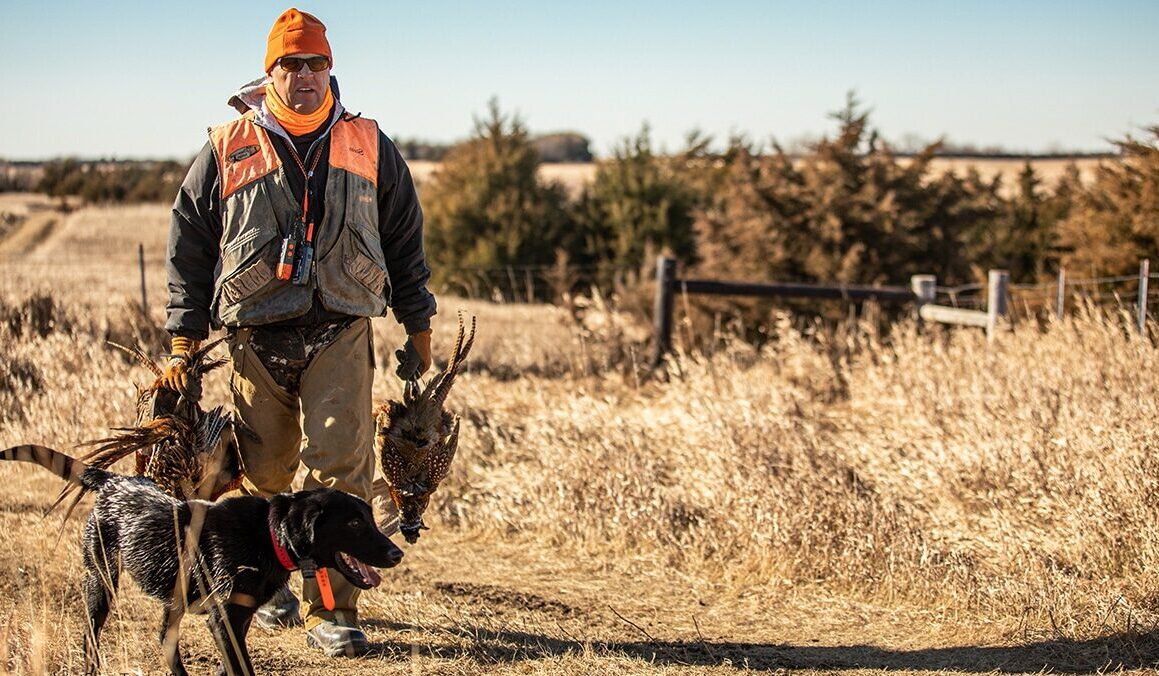
South Dakota: Still the King for Roosters
South Dakota is synonymous with pheasants and holds the undisputed title of “Pheasant Capital of America.” With bird harvests reaching over 1 million birds most years, it’s a place every upland hunter needs to experience. South Dakota doesn’t even have to be “pay to play” because public land opportunities are world-class with over 12 million acres open to hunters. The Walk-in Areas Program has also opened up 1.25 million additional acres, 300,000 of which are prime for chasing roosters.
There’s no arguing pheasant populations have declined from historic highs due to habitat loss, but thanks to organizations such as Pheasants Forever there are new concepts starting to help maintain habitat and offer more public hunting opportunities. The Aberdeen Pheasant Coalition was created by the local Aberdeen Pheasants Forever Chapter and consists of local businesses, the tourist industry, conservation organizations, and sportsmen coming together to provide funding for a signup incentive for farmers and landowners to enroll their lands into the Conservation Reserve Program.
Setting up a public land hunt in the southernmost Dakota isn’t difficult; all it takes is a little research. Turn on your Government Lands and Walk-in Areas Layers and start looking for likely rooster haunts. The eastern two-thirds of the state has the best pheasant population and opening week is considered a holiday as thousands of hunters flock to chase these gaudy birds. By the time the season closes at the end of January, the competition is minimal.
Tom Steinhauser of Platte Creek Lodge has been hosting pheasant hunters since 2001 and life revolves around the state’s official bird. “The sheer quantity of birds speak for themselves, but it’s not even my favorite part,” he says. “It’s the people and the friendliness of small-town South Dakota, and the relationships I’ve been able to build with people all across the world, who come here to walk the prairies in search of roosters.”
Take a closer look at South Dakota:
Maine: The Best East Coast Bird State
The East Coast used to be a powerhouse for grouse numbers, but year after year flush counts continue to decline. Even though it may not be what it once was, it doesn’t mean grouse and woodcock hunters can’t have banner days. It is a very popular destination for die-hard grouse hunters around the country, because of the bird numbers and the tradition surrounding the hunt. There are nearly 2 million acres of public ground for hunting, and due to the health of the timber industry, Maine has an extensive patchwork of habitat.
A great kicker for those looking to travel in search of grouse, is a liberal bag limit of 4 per day. One of the best times to be in the woods is the last two weeks of October, as the majority of the leaves have fallen, and it falls between the big game firearms seasons.
Maine considers 17,721,600 acres of forest land to be grouse habitat, and with an annual harvest of roughly 500,000 birds per year, it’s your best bet to find great numbers in the east.
Take a closer look at Maine:
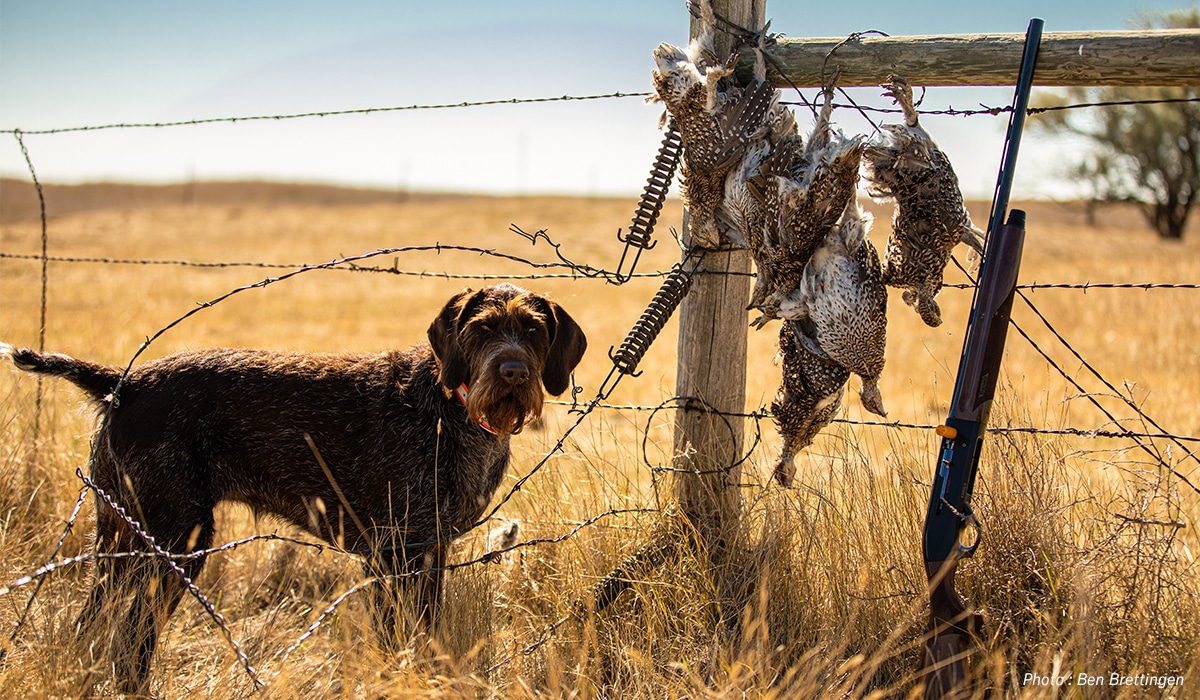
North Dakota: Best Sleeper State
Often overshadowed by its neighbors to the south and west, North Dakota shouldn’t play second fiddle in the bird hunter’s mind. Although it’s not as renowned for its pheasant population, it’s still one of the best states in the nation to chase them. One great thing about hunting North Dakota is it’s one of the best states in the country to chase waterfowl as well. You can hunt ducks and geese in the morning, and then put on a vest and walk for roosters, sharpies, and huns in the afternoons.
Tyler Webster, the host of the Birds, Booze, and Buds podcast, is no stranger to the possibilities North Dakota has to offer.
“North Dakota has long been a hotspot for the traveling wingshooter and with good reason. There is access to millions of acres of huntable land, and plenty of birds. From pheasants and sharptail grouse to ducks and geese it’s hard to beat legendary North Dakota!”
Similar to Montana, North Dakota has an exceptional population of sharpies and huns. If you’re looking to find these prairie birds, the western half of the state is where you’ll want to be hunting. If you want more information on how to use onX to locate and effectively hunt sharp-tailed grouse, Webster has a great video on how he finds prime ground.
North Dakota is one of the few states that allows hunters access to private lands if they aren’t posted, opening up a lot more ground to hunt birds. It is important not to take this privilege for granted and when possible it’s still a great idea to talk to the landowner, and always leave the area better than you found it.
“Most land is actually posted for deer hunting, and you’ll have better luck asking for permission to chase upland birds. This is especially true after the rifle season is finished in mid-November” says onX Hunt Midwest Manager Ben B.
Take a closer look at North Dakota:
- onX North Dakota Upland Hunting
- North Dakota Game and Fish Upland Game
- Podcast: How to Find and Hunt Sharp-tailed Grouse
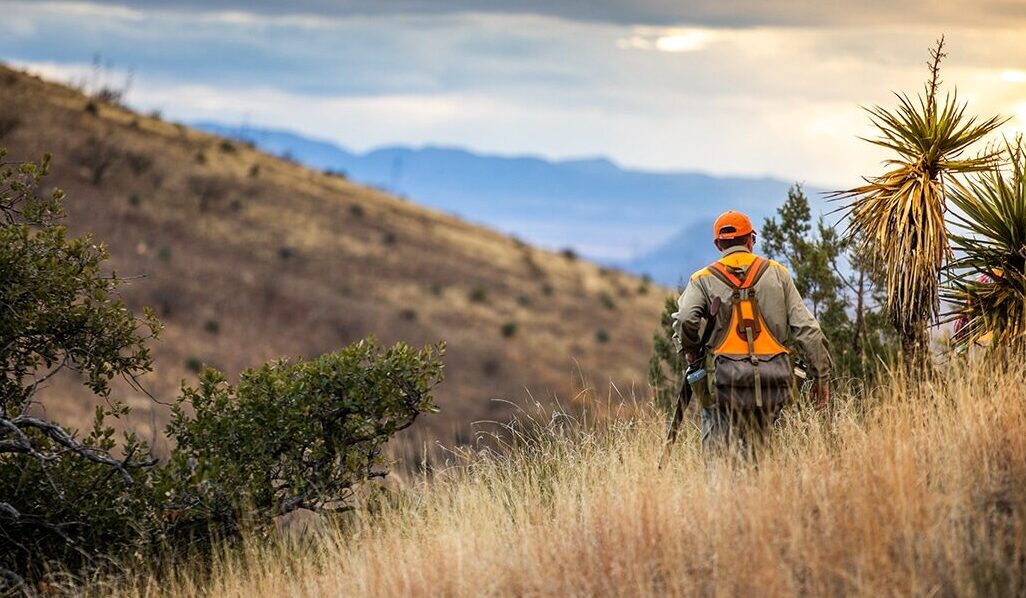
Arizona: Best Winter Vacation Hunt
Every winter Arizona is home to an upland pilgrimage from hunters across the country in search of mearns, gambles, and scaled quail. The mearns quail, also known as the Montezuma quail, range is mostly found in Mexico, but along the southern edge of Arizona, near Sierra Vista, a hunter is able to pursue them without leaving the country. Adorned with a black-and-white, harlequin-marked head, the Montezuma quail is a trophy for many hunters. This secretive bird is known to hold, creating great opportunities for dog work.
If you’re in the area, it’s worth chasing after gambles through the desert. While the mearns quail is found in the oak shrublands of the “Sky Islands,” the gambles live amongst the Saguaro Cactus, Jumping Cholla, and Teddy Bear Cholla of the desert.
Patrick Flanagan of Border to Border Outfitters and his string of dogs spend the majority of the season helping hunters find desert birds.
Flanagan says, “Arizona holds the title of the most unique do-it-yourself destination. So inviting is the vast, open-to-the-public, millions of acres of public land in Arizona. The beauty and freedom allows for over 100 days of quail and three amazing but challenging birds to seek.”
While you’re in the area, you might as well complete your Arizona slam and add scaled quail to the agenda. Found primarily near the eastern border of the state, scalies, like Gambles, are more prone to running than holding, making hunters alter their traditional tactics.
Take a closer look at Arizona:
Wyoming: Best State for Sage Grouse
If you are after one of America’s most iconic species, the sage grouse, Wyoming is your state. Over 37% of sage grouse call Wyoming home, and with over 35 million acres of government lands, there is ample opportunity. The core areas of sage grouse are distributed in a line stretching across the state from the northeast to the southwest part of the state.
If you’re going to pick Wyoming for a sage grouse hunt, it’s a tight window of time to hunt them. It runs from September 21-30 in Area 1, and Areas 2, 3, and 4 are closed.
Although there are more sage grouse in Wyoming than in any other state, they aren’t the only show in town. Blue grouse, sharp-tailed grouse, Hungarian partridge, chukar, and pheasant are also on the menu.
Take a closer look at Wyoming:
Nebraska: Best Prairie Grouse State
Sandwiched between the pheasant factories of South Dakota and the quail of Kansas, Nebraska’s birds don’t care about boundaries because the pheasant hunting ranks right up there with the best states. One of the best areas to chase roosters is in the state’s southwest and panhandle regions. Quail are also plentiful, especially in the southern reaches of the state, and make for a fantastic opportunity for the “Nebraska Upland Slam.”
Omaha native Marissa Jensen is Nebraska’s Outreach and Communications Coordinator for Pheasants and Quail Forever, and she gives high praise for the Cornhusker State.
“In certain parts of the state, you can find sharp-tailed grouse and greater prairie chickens together,” she says, “and you even have a chance at the other upland birds nearby. I have yet to find a place that captures the beauty of prairie grouse hunting in the sandhills like Nebraska does. Additionally, there are great public land opportunities, including over 372,000 acres enrolled in Open Fields and Waters, Nebraska’s walk-in access program.”
The rugged expanse of grassland in the Sandhills is reminiscent of pre-European settlement times. Some of the best public areas to hunt grouse and chickens are the Valentine, Samuel R. McKelvie, and Nebraska National Forests.
Take a closer look at Nebraska:
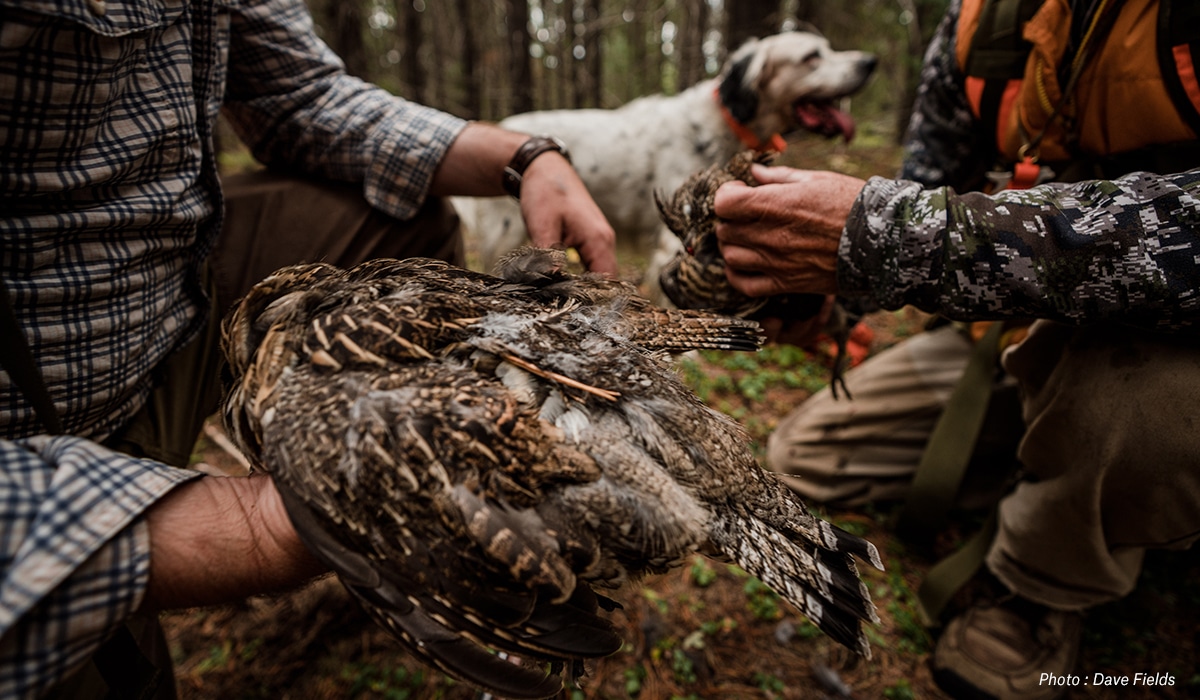
Minnesota: Best State for Grouse Hunting
The host of the popular bird hunting TV show, The Flush, and Minnesota resident, Travis Frank, sums up hunting his home state the best: “Minnesota slips under the radar for many of America’s upland bird hunters, but I’ve hunted here enough to know that it shouldn’t.”
Minnesota is one of the nation’s top destinations to hunt “The King” of upland birds, the ruffed grouse. The northern half of Minnesota is home to a sprawling expanse of forests, and prime habitat for not only ruffed grouse, but spruce grouse and woodcock too. In the north country, there are endless public land possibilities to chase birds. Large tracts like the Superior and Chippewa National Forests are big enough that you can get off the beaten path and get away from other hunters. Large state forests such as Beltrami, Pine Island, Bowstring, Kabetogama, and Koochiching represent over 2.6 million acres teeming with prime grouse habitat.
As you head south the expansive forests give way to the prairies of the southwest. In the southwest parts of the states, the pheasant hunting rivals that of the Dakotas.
Frank says, “The key here is that hunters traveling west from Minnesota, Wisconsin, Iowa, and Illinois will typically drive the extra hour or two into South Dakota. That leaves these western Minnesota properties relatively quiet throughout the season and more roosters for your game bag.”
Public land takes on a different form when you move south into pheasant country. Wildlife Management Areas and Waterfowl Production Areas are your best bets for getting into roosters on public land. Many of the areas are a mix of wetlands and prairies, and being in farm country often borders cropland making them great candidates to find birds. Every year the Minnesota Department of Natural Resources puts out a pheasant hunting prospect map, which shows projected bird densities based on the August roadside counts. Just because it may list an area as poor or fair doesn’t mean it’s worth skipping—where there are pockets of good habitat, the birds will likely be there as well.
Everything converges in the Northwest corner of the state. Grouse and pheasant country start to merge and, in addition, you’ll be able to find sharp-tailed grouse. If you’re lucky enough you may even be able to draw a prairie chicken permit in the land of 10,000 lakes.
“It’s possible to bag four species of upland birds in a single day, which makes Minnesota a destination worth any bird hunter’s time,” says Frank.
Take a closer look at Minnesota:
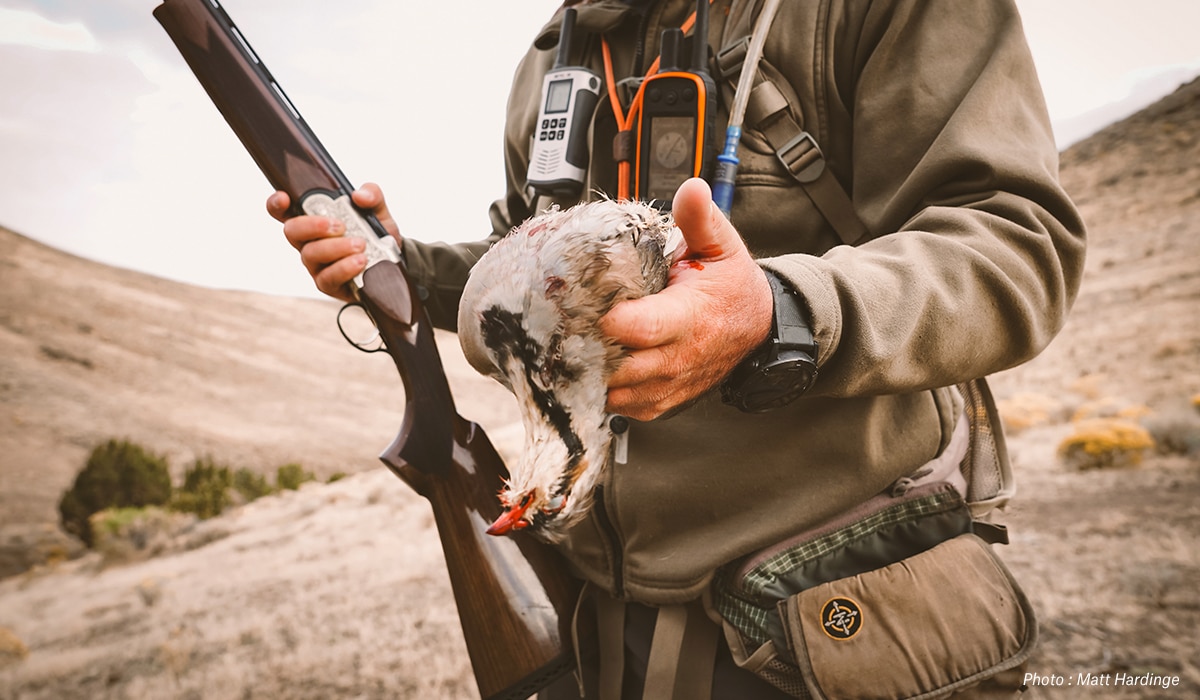
Idaho: Best State for Birds With a View
With diverse habitats, picturesque landscapes, and bird species, Idaho is a gem of the Pacific Northwest.
When most people think about Idaho, chukar is the first thing that comes to mind, and for good reason. The quintessential chukar destination is Hells Canyon, which is the deepest gorge in North America. Scouting is essential to being successful in the steep and deep terrain. A mile in chukar country is very different from a mile in the pheasant field, and you can burn out boot leather quickly. There’s also no need to worry about getting away from people, as public land is abundant. onX Product Marketer Custis C. and his two dogs, Grits and Oski, are no strangers to Idaho’s game birds.
“Idaho is a land of opportunity for upland bird hunters,” he says. “Whether you like punishing yourself climbing up the hills in search of huns and chukar, hunting brushy drainages for California quail, walking across native grassland for some sharptail, or going for pheasants in irrigation ditches, there’s something for you. The variety of species you can chase there all across the state is incredible and the expanse of public land makes hunting pressure low.”
Take a closer look at Idaho:
Header image: Matt Addington Creative
FAQs
Top picks by specialty: South Dakota (pheasant), Kansas (quail + pheasant, liberal limits), Montana (multi-species early season), Maine (grouse/woodcock East), Arizona (winter quail trifecta), Wyoming (sage grouse), Nebraska (prairie grouse + pheasant/quail), Minnesota (grouse stronghold + western pheasants), North Dakota (sleeper multi-species), Idaho (chukar + variety).
South Dakota remains the benchmark (“Pheasant Capital”) with millions of open acres; Kansas, Nebraska, North Dakota, Minnesota (west/southwest), and parts of Montana/Idaho also produce.
Kansas for bobwhites (plus pheasant combos); Arizona for winter mearns/Gambel’s/scaled on vast public lands; Nebraska and Texas (not in this list) also offer strong bobwhite pockets.
Use onX Hunt to turn on Government/Public Land Map Layers and state walk-in access Map Layers (e.g., KS WIHA, NE Open Fields & Waters, SD Walk-In Areas). Cross-check season dates and unit rules, drop Waypoints, and download Offline Maps.
Not required, but a pointing or flushing dog greatly improves finds, tracking, and retrieves—especially for mearns, chukar, and late-season pheasants.